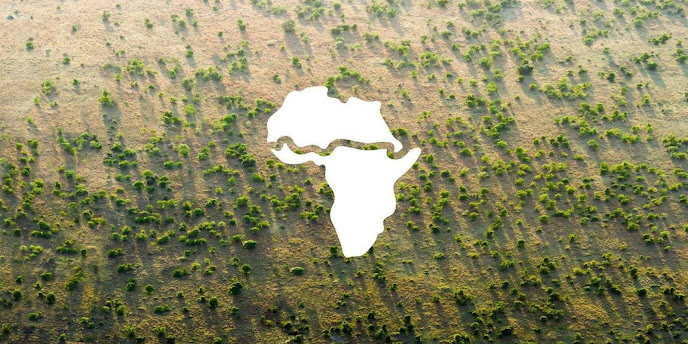Regreening the Sahel
In my previous blogs, I talked about how environmental changes affect the Sahel's rainfall variability and future projections and uncertainties. Over the past decades, the Sahelian people have also made many efforts to combat the challenges due to environmental changes. My last blog will be introducing some of the mitigations and adaptations that the Sahel has been doing.
In order to fight drought and restore land fertility, in 2007, 11 countries in the Sahel - Senegal, Mauritania, Mali, Burkina Faso, Niger, Nigeria, Chad, Sudan, Djibouti, Eritrea, and Ethiopia - launched the Great Green Wall (GGW) initiative together. This project aims to build a 15 km wide and 8000 km long belt of plants stretching across the Sahel (Schleeter, 2013). Significant progress has been made since its launch. By 2020, the total intervention area of the GGW initiative expanded to 156 million hectares (UNCCD). In the meantime, millions of jobs have also been created and contributed to economic development and poverty improvement in the Sahel (UNCCD,2020). Due to the consequent economic growth, there is also some evidence that the conflicts within the Sahel have also reduced (Schleeter, 2013). There is also a short video below that introduces the implementation status of the GGW initiative by UNCCD.
 |
| Figure 1. The icon of the Great Green Wall (UNCCD) |
Although the focus of the GGW initiative is to plant trees across the Sahel, it is not simply just a tree-planning project. It also hopes to develop a sustainable way to restore trees without planting trees (Schleeter, 2013). Actually, in Burkina Faso, this kind of natural regeneration managed by the local farmers has been proven to be successful over the past three decades. Local farmers improved the traditional soil and water management which evolved into the so-called "agroecology". Rather than introducing external inputs and focusing on one component, the critical concepts of agroecology are to recycle nutrients and energy on the farm and focus on the interactions and productivity throughout the agricultural system. The integration between crops and livestock and species diversification is also essential (Magrath, 2020).
Evidence has shown that implementing the natural regeneration approach in Burkina Faso has successfully improved land fertility, agricultural productivity, biodiversity, food, water, and economic security. Around 200 million trees have been grown, and the reversal of land degradation is estimated to be three times larger than the area of Wales. The gross household income of Burkina Faso is estimated to have an 18%-24% growth, and approximately 3 million people's food security has improved (Magrath, 2020). Climatically, as introduced in the previous blog associated with vegetation-rainfall feedback, an increase in vegetation also leads to the positive feedback that reduces the local temperature and increases the local precipitation. Subsequently, the soil moisture and groundwater recharge also increase in Burkina Faso(Magrath, 2020). It can be imagined that through the GGW initiative if this kind of natural regeneration can be applied across the entire Sahel, the benefits will be substantial.
The Great Green Wall initiative also means a lot for the whole world. By now, more than 20 African countries have joined this project (UNCCD). It has united the African continent and shown that if we can work together and work with nature, we can make a better environment.
If you wish to contribute to the GGW initiative, here are two websites: Great Green Wall and TreeAid you can use.
Thanks for reading! Hope you enjoy my blogs!


Comments
Post a Comment